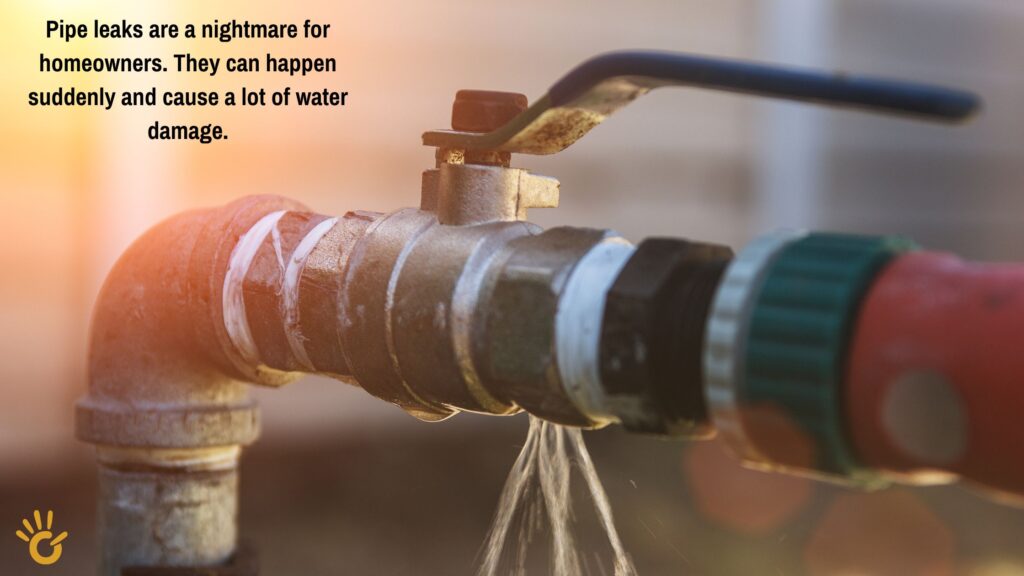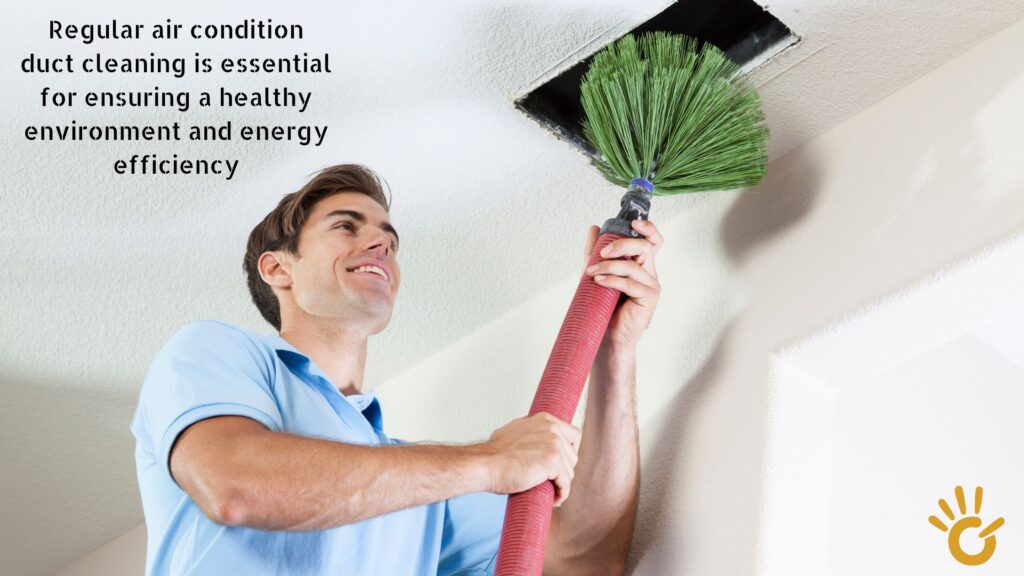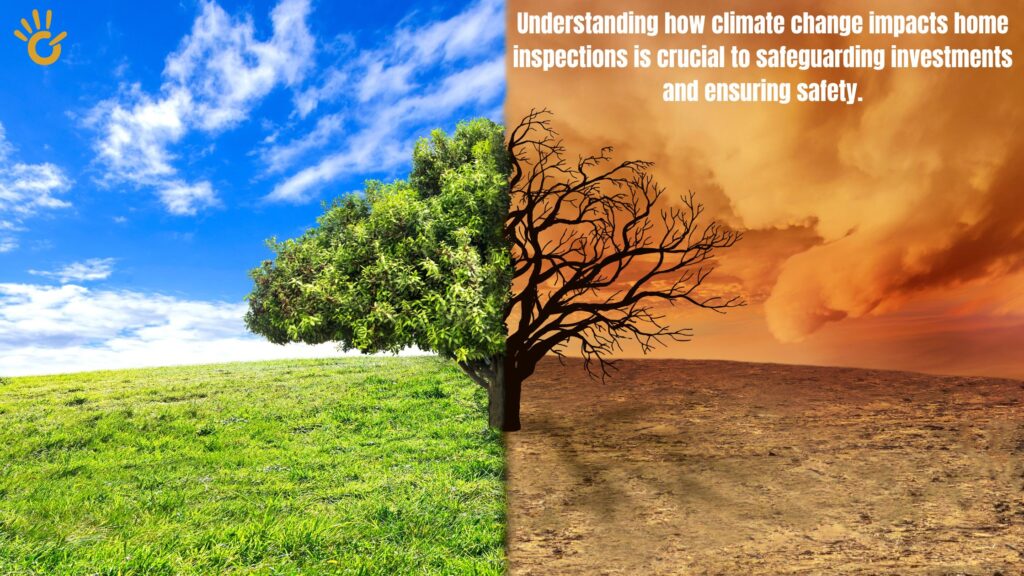Pipe leaks are a nightmare for homeowners. They can happen suddenly and cause a lot of water damage. In the United Arab Emirates, where saving water is important, knowing why pipes leak is key to keeping your home in good shape. Let’s explore the main reasons behind these leaks that can harm your property.
Corrosion is a big problem for pipes. Brass pipes can last up to 70 years, but galvanized steel pipes might not last as long, around 20 years1. If your pipes are corroding, you might notice poor water pressure, water that tastes like metal, or water that’s not its usual color2.
Water pressure is also important. In Dubai, the normal pressure is between 2.5 to 3 bar. But, if it gets too high, above 60 psi, it can damage your pipes21. High pressure can even make pipes burst, leading to serious water damage.
Temperature changes can also be a problem. When temperatures change quickly, pipes can expand or contract, leading to cracks and leaks3. If water freezes in your pipes, it’s a sign you need to fix them fast2.
Tree roots can also be a problem. They can get into your water lines and cause leaks outside your house1. Look for sinkholes or wet spots in your garden as signs of this issue2.
Key Takeaways
- Corrosion affects different pipe materials at varying rates
- High water pressure can lead to pipe damage and leaks
- Temperature changes can cause pipes to crack
- Tree roots may intrude and damage underground pipes
- Regular inspections are crucial for early leak detection
- Professional plumbing assessment helps prevent major issues
- Prompt repairs can save on costly water damage expenses
Understanding Pipe Leaks and Their Impact on Your Home
Pipe leaks can cause a lot of damage to your home. They can lead to water damage and weaken the structure. Homeowners in the UAE should watch out for plumbing problems to keep their homes safe and their money in their pockets.
The Hidden Dangers of Undetected Leaks
Leaks that go unnoticed can be very dangerous. They can cause mold to grow, which can harm the air you breathe and your health. Also, water can weaken walls, floors, and ceilings over time4.
Early Warning Signs of Pipe Problems
It’s important to spot pipe problems early. Look out for higher water bills, damp spots, or musty smells. Changes in water flow or pressure can also mean there’s a leak45.
- Condensation or puddles near appliances
- Discoloration or warping on pipes
- Wet patches or sinkholes in the yard
Financial Implications of Pipe Leaks
Ignoring leaks can cost a lot of money. You’ll face higher water bills and have to pay for repairs. But, taking care of your pipes and fixing leaks quickly can save you a lot of money in the long run.
| Leak Cause | Potential Cost | Prevention Method |
|---|---|---|
| Aging Pipes | $1,000 – $15,000 | Regular inspections |
| High Water Pressure | $150 – $350 | Install pressure regulator |
| Clogged Lines | $100 – $600 | Proper disposal habits |
By being aware of the signs and understanding the risks, UAE homeowners can protect their homes from pipe leaks. Regular checks and quick action can prevent expensive damage and keep your home safe and healthy.
Causes of Pipe Leaks: Essential Information for Homeowners
Pipe leaks can cause a lot of damage to your home. They waste water and can be very expensive. Knowing why they happen helps you prevent them and find problems early.
Pipe corrosion is a big problem, especially in older homes. Pipes made of cast iron or galvanized steel can weaken and leak over time6. Brass pipes, on the other hand, can last up to 70 years, much longer than galvanized steel’s 20 years7.
Leaks often happen at joints because of bad sealing or damaged fittings. These spots are weak and prone to leaks6. Getting a plumber to check your pipes regularly can catch these problems early7.
Water pressure is also important for your pipes. Too much pressure can damage joints and fittings, making leaks more likely6. Using a pressure regulator can keep the water flow safe and prevent pipe damage6.
Tree roots can also cause leaks, especially in older sewer lines. Roots look for water and can get into small cracks or joints, making them bigger over time.
| Cause | Impact | Prevention |
|---|---|---|
| Pipe Corrosion | Weakened pipes, holes | Use durable materials (PEX, copper) |
| Joint Failures | Leaks at connections | Regular inspections |
| High Water Pressure | Stress on pipes and fittings | Install pressure regulator |
| Tree Root Intrusion | Cracked or blocked pipes | Root barriers, regular maintenance |
By tackling these common causes, you can lower the chance of leaks. Leaks can waste up to 45,000 liters a year, costing about $100 on your water bill7. Using strong materials and keeping up with maintenance can save you money and avoid expensive fixes later.
Pipe Corrosion and Material Deterioration
Pipe corrosion is a big problem that can cause leaks and affect water quality. Different materials face different corrosion challenges.
Types of Corrosion in Different Pipe Materials
Uniform corrosion makes the pipe lose thickness evenly. Pitting corrosion creates deep holes in the metal8. Galvanic corrosion happens when two metals touch, causing one to corrode faster8. Copper pipes are especially at risk from chlorine in water8.
| Pipe Material | Corrosion Susceptibility | Common Corrosion Types |
|---|---|---|
| Copper | High | Pitting, Galvanic |
| Iron | High | Uniform, Rust |
| PVC | Low | Chemical degradation |
| PEX | Very Low | Minimal corrosion |
Signs of Corroding Pipes
Corroding pipes can turn water brown or blue, make it cloudy, and smell bad9. If water tastes metallic, it’s a sign of corrosion9. You might also see clogs or sudden changes in water temperature9.
Prevention and Treatment Options
To stop corrosion, keep pipes away from electric currents and keep water pH balanced9. Plumbers can use descaling tools to clean corroded pipes9. For serious cases, you might need to line pipes or replace them with materials like PEX or PVC9.
“Prevention is key when it comes to pipe corrosion. Regular inspections and proper water treatment can save homeowners from costly repairs down the line.”
Joint Failures and Connection Problems
Pipe joints and connections are key in plumbing systems. They often face stress and wear, leading to leaks. Knowing why joints fail can help homeowners avoid expensive fixes.
Flange joint leaks are common in many fields, like oil and gas and chemical processing. These leaks usually come from three main reasons: fastener failures, gasket failures, and flange failures10.
Gasket failure can happen for many reasons, like wrong installation, poor quality, or the wrong material. When picking gaskets, choose ones that are reliable and safe, not just cheap. It’s important to use the right torque and follow the installation steps to make them last10.
Bad installation can lead to leaks in underground pipes. Wrong joint connections or slope alignment are common mistakes. Ground movement and settlement can also stress pipes, causing leaks when joints get out of line11.
| Joint Type | Common Issues | Prevention Tips |
|---|---|---|
| Flange Joints | Gasket failure, warped surfaces | Use correct torque, quality gaskets |
| Threaded Connections | Over-tightening, corrosion | Use pipe tape, avoid excessive force |
| Soldered Joints | Poor soldering, thermal stress | Proper cleaning, even heating |
It’s important to regularly check your pipe joints, seals, and connectors. Replacing worn-out parts on time can stop leaks and keep your plumbing system working well.
The Impact of Water Pressure on Pipe Health
Water pressure is key to keeping your plumbing system healthy. The right water pressure helps pipes last longer and saves you money on repairs.
Understanding Normal vs. Excessive Pressure
Normal water pressure is between 50 to 65 psi. This is perfect for everyday use. But, homes at the bottom of hills might face high pressure, which can be a problem12. Pressures over 75 psi can really harm your plumbing13.
Pressure-Related Damage Signs
High water pressure shows up in many ways. Look out for dripping faucets, leaky pipes, and noisy plumbing13. If your appliances break down faster or you hear strange noises in your pipes12, it’s a sign of trouble.
Solutions for Pressure Management
Managing water pressure is crucial to avoid plumbing problems. Using pressure relief valves can help. Water pressure regulators are important for keeping pressure in check and preventing damage12. Keeping up with maintenance and fixing issues quickly is vital to keep your plumbing running smoothly13.
| Pressure Range | Impact on Plumbing | Recommended Action |
|---|---|---|
| 50-65 psi | Optimal for system health | Regular maintenance |
| 66-75 psi | Increased wear on fixtures | Monitor closely |
| Above 75 psi | High risk of damage | Install pressure regulator |
Fixing water pressure problems early can save you a lot of money. Regular checks and professional care are essential. They help keep your plumbing system in top shape and prevent damage.
Temperature Fluctuations and Freeze Damage
Extreme temperature changes can harm your plumbing system. Pipes expand and contract with temperature changes, which can cause cracks and leaks. This is especially true in areas with harsh winters, where freezing pipes can burst as water inside them expands14.
Frozen pipes can cause a lot of damage. Over 250,000 homes are damaged by frozen and burst pipes each year. The cost is around $400-500 million annually15. Water damage claims are the second most common, with most happening in winter due to burst pipes15.
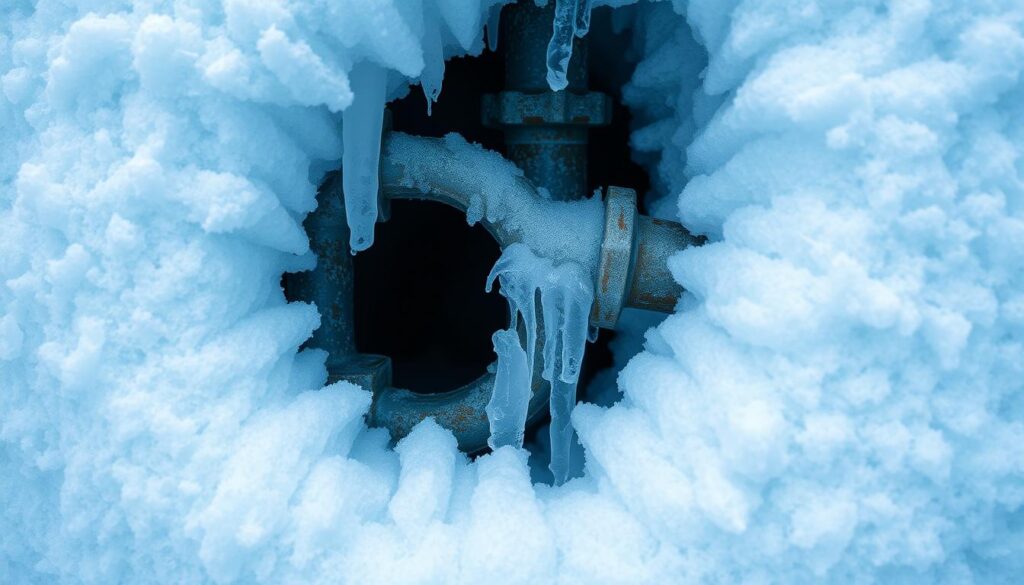
Pipes can freeze and get damaged if they’re exposed to temperatures below 20°F for a few hours15. Spaces like basements, crawl spaces, attics, and garages are especially vulnerable. Outdoor hose bibs, swimming pool supply lines, and water sprinkler lines are also at risk15.
It’s important to take preventive steps. Insulating pipes well is key to keeping them from freezing. Using foam and heat tape can help15. When it’s cold, opening sink cabinets and letting faucets drip a bit can prevent pipes from freezing15. Regular checks and quick action to thaw frozen pipes can prevent bursts and water damage15.
“An ounce of prevention is worth a pound of cure when it comes to protecting your pipes from freeze damage.”
By understanding the risks and taking proactive steps, homeowners can protect their plumbing systems from temperature changes and freezing.
Tree Root Intrusion in Plumbing Systems
Tree roots can damage underground pipes, causing blockages and leaks16. They are attracted to moisture, making pipes vulnerable to intrusion17. It’s important for homeowners to know how to protect their property from sewer line damage.
How Roots Infiltrate Pipes
Roots find moisture and enter pipes through small cracks or joints. As they grow, they can block or break pipes. Clay pipes are more prone to damage, but PVC and HDPE are more resistant17.
Detection Methods
Spotting root intrusion early is crucial. Look for slow drains, gurgling sounds, strange smells, and backups. Also, watch for green patches or sinkholes in your yard17. Professional inspections with camera technology can confirm root presence in your pipes.
Prevention Strategies
To keep your pipes safe, try these:
- Install root barriers made of plastic, metal, or stone near pipes16
- Choose trees that are less likely to harm pipes17
- Regularly inspect and maintain your pipes17
- Use pipe lining to stop roots without digging16
- Keep drains clean to avoid blockages16
Fixing leaks quickly helps prevent root damage16. By using these methods, you can protect your plumbing from expensive root problems.
Poor Installation and Maintenance Issues
Improper pipe laying and plumbing code violations can cause big problems in your home’s water system. Bad installation often leads to early leaks18. This is why it’s key to hire skilled plumbers for the job.
Not taking care of your plumbing can make things worse. Regular checks are important to spot issues early. For example, water lines near the surface can burst in freezing weather18. Finding problems early can save you a lot of money.
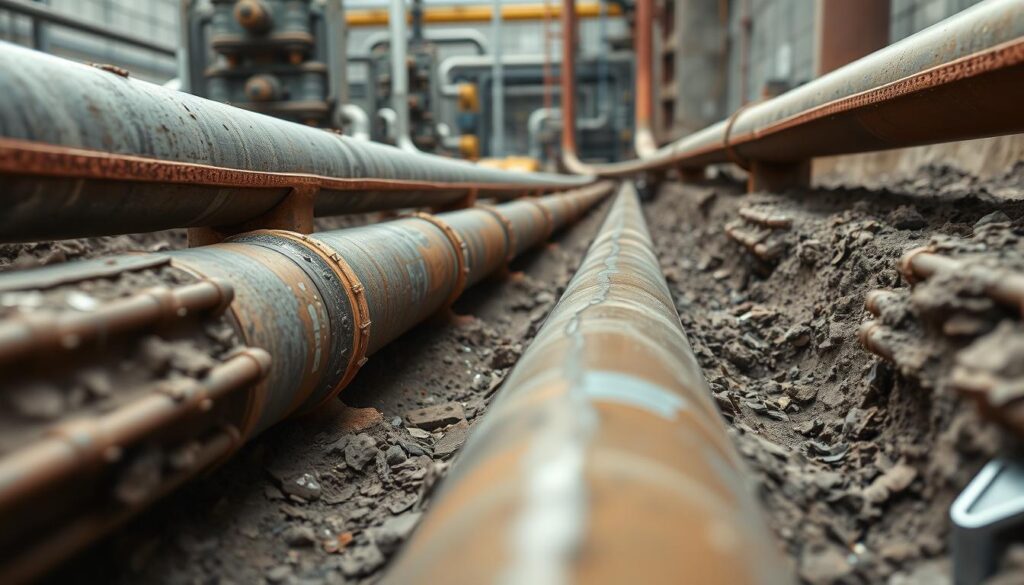
Changes in soil and pressure can also harm your plumbing18. This shows why proper setup and upkeep are vital for your pipes to last.
“Prevention is better than cure. Regular maintenance can save homeowners from unexpected plumbing disasters.”
Ignoring installation and maintenance can cost a lot. Fixing low water pressure can cost between $100 to $60019. Replacing a hot water heater might cost $900 to $2,00019.
| Issue | Time to Fix | Cost Range |
|---|---|---|
| Low Water Pressure | 30 min – 2+ hours | $100 – $600+ |
| Hot Water Heater Replacement | 2 – 4 hours | $900 – $2,000 |
| Running Toilet Repair | Few min – 1.5 hours | $0 – $300+ |
Even small problems, like a running toilet, can cost a lot to fix, up to $30019. By fixing installation problems and keeping up with maintenance, you can avoid these high costs. This way, your home’s water system will work well for many years.
The Role of Age in Pipe System Failures
Aging infrastructure is a big problem for pipes, leading to water loss and higher maintenance costs. In the U.S., pipes are on average 45 years old, with some cast-iron pipes over 100 years old20. This causes pipes to degrade often, making repiping common in many places.
Lifespan of Different Pipe Materials
Knowing how long different pipes last is key for keeping them in good shape. Here’s a look at common pipe types and how long they’re expected to last:
| Pipe Material | Expected Lifespan | Susceptibility to Erosion/Corrosion |
|---|---|---|
| Copper | 50-70 years | High |
| PVC | 25-40 years | Low |
| PEX | 40-50 years | Moderate |
| Stainless Steel | 50-100 years | Low |
Copper pipes are prone to erosion and corrosion, especially with high water pressure21. Stainless steel pipes, however, are more resistant to damage, making them good for commercial use21.
When to Consider Pipe Replacement
It’s time to think about repiping when your pipes are near the end of their life or show signs of wear. In the U.S., a pipe breaks every two minutes, wasting 6 billion gallons of water daily20. This highlights the need for replacing pipes to avoid water waste and damage.
Regular checks and maintenance can help deal with aging pipes. Keeping water pressure under 500 kPa and hot water below 50°C can prevent damage and save on plumbing costs21. Knowing the erosion and corrosion risks in your area is also important for keeping your pipes in good shape.
Clogged Pipes and Their Consequences
Clogged pipes can cause big problems in your home. They can lead to leaks or bursts in pipes. This can cost thousands of dollars to fix, especially if your walls, floors, and ceilings get wet22.
These problems can also attract mold, insects, and larvae22.
Grease, foreign objects, and mineral deposits often clog pipes. Look out for slow drains, gurgling sounds, and bad smells. In older homes, corroded pipes can turn water brown and cause leaks23.
Tree roots can also get into pipes, especially clay ones, causing gurgling and bad smells23.
To avoid these problems, clean your pipes regularly and dispose of waste properly. For tough clogs, you might need a pro to clean them out. Remember, plumbing leaks don’t fix themselves and are cheaper to fix early22.
Calling a plumber for leaks or clogs can save you money and prevent water backup2224.
FAQ
What are the most common causes of pipe leaks?
Pipe leaks often come from corrosion, joint failures, and too much water pressure. Tree roots, bad installation, age, and temperature changes also play a role. Knowing these causes helps homeowners prevent and spot problems early.
How can I detect a hidden pipe leak?
Watch for signs like higher water bills, damp spots, musty smells, and lower water pressure. These signs mean you might have a leak. Catching it early can save you a lot of money.
What damage can undetected pipe leaks cause?
Leaks can cause water damage, mold, and weaken your home’s structure. They also raise your water bills. Plus, they can make your home unhealthy due to mold.
How often should I have my pipes inspected?
Get your pipes checked by a pro every year. This helps find problems before they get worse. It also keeps your plumbing system working longer.
What is the lifespan of different pipe materials?
Pipe life varies by material. Copper lasts 50-70 years, PVC 25-40 years, and cast iron up to 100 years. Knowing your pipes’ material and age helps plan for replacements.
How can I prevent freeze damage to my pipes?
Keep pipes warm with insulation and consistent indoor heat. Let faucets drip in cold weather. In cold areas, protect your pipes from freezing.
What should I do if I suspect a pipe leak?
If you think you have a leak, turn off the main water valve. Then, call a plumber right away. Don’t try to fix big leaks yourself, as it can make things worse.
How can I protect my pipes from tree root intrusion?
Plant trees far from pipes, use root barriers, and check your sewer lines often. These steps help find and fix problems before they get bad.
What is considered normal water pressure for residential plumbing?
Normal water pressure is 40 to 60 psi. Pressures over 80 psi can harm your pipes, leading to leaks and bursts.
How can I maintain my pipes to prevent leaks?
Keep your pipes in good shape with regular checks and quick fixes. Manage water pressure, avoid harsh cleaners, and be careful what you flush. These steps help avoid leaks and keep your plumbing working well.
Source Links
- The 10 Most Common Causes of Leaky Pipes — BL3 Plumbing & Drain Cleaning – https://www.bl3inc.com/blog/the-10-most-common-causes-of-leaky-pipes
- Understanding The Most Common Causes & Signs Of Pipe Leaks – https://www.wewillfixit.com/top-causes-pipe-leaks-early-signs/
- 7 Common Causes Of Pipe Leaks – https://supremepipe.com/blog/causes-of-pipe-leaks/
- 8 Common Causes Of Household Water Leaks – https://333help.com/blog/common-water-leak-causes/
- Check out these tips to save yourself both time and money when faced with a leaking pipe. – https://trustedhomesc.com/common-pipe-leak-causes/
- Common Causes of Pipe Leaks – https://redcapnow.com/help-guides/common-causes-pipe-leaks
- Leaking Pipes? 5 Common Causes & Quick Solutions – PCLA – https://pcla.co.uk/leak-detection/why-are-my-pipes-leaking-and-what-to-do-about-it/
- Most Common Causes of Pipe Corrosion and How to Prevent Further Damage‐ WP Plumbing – https://wpplumbing.com.au/blog/causes-of-pipe-corrosion
- Water Pipe Corrosion: Impact, Causes & Solutions to Know – https://worksplumbing.com/water-pipe-corrosion/
- 3 Causes Of Pipeline Flange Joint Leaks | Shannon GES – https://shannonglobalenergy.com/3-causes-of-pipeline-flange-joint-leaks/
- Behind the Leaks: 6 Root Causes of Underground Pipe Leakage – Vectus – https://www.vectus.in/blog/behind-the-leaks-6-root-causes-of-underground-pipe-leakage/
- Why High Water Pressure Can Harm Your Plumbing‐ WP Plumbing – https://wpplumbing.com.au/blog/why-high-water-pressure-can-be-harmful
- Problems With Water Pressure? Common Causes & Solutions – https://www.pipewrenchplumbing.com/blog/water-pressure-causes-and-solutions/
- Dealing With Leaking Pipes: Reasons, Prevention and Remedies – https://www.prideplumbingofrochester.com/blog/dealing-with-leaking-pipes
- Preventing Damage From Frozen Pipes | BMS CAT – https://www.bmscat.com/blog/preventing-frozen-pipe-damage/
- 9 Ways to Avoid Tree Roots in Your Pipes – IT Landes – https://itlandeshome.com/blog/9-ways-to-avoid-tree-roots-in-your-pipes/
- Understanding the Hazard of Tree Roots in Plumbing Systems – https://www.austworld.com.au/en/news/2024/May/deep-rooted-issues–414
- 6 Common Causes of Water Line Leakage – Accurate Leak & Line – https://www.accurateleak.com/blog/6-common-causes-of-water-line-leakage/
- 5 Common Plumbing Problems and How to Diagnose Them – https://www.architecturaldigest.com/story/plumbing-problems
- A Water Utility Problem? How Ageing Infrastructure Impacts Us All – https://www.amcsgroup.com/blogs/a-water-utility-problem-how-ageing-infrastructure-impacts-us-all/
- Aging water pipes suffer from erosion and corosion increasing costs – https://whywait.com.au/as-your-water-pipes-age-erosion-and-corrosion-can-create-significant-expenses/
- The Super Plumber – https://www.thesuperplumber.com/blog/2021/december/can-a-clogged-pipe-or-drain-cause-a-leak-/
- Leaking Pipes: Problems, Causes, & Solutions | McQuillan Home Services® – https://mcquillanbros.com/blog/leaking-pipes-problems-causes-solutions/
- What are the most common causes of plumbing leaks? | Plumbing Leak Detection – https://www.everydayplumbing.com.au/plumber/information/what-are-the-most-common-causes-of-plumbing-leaks

